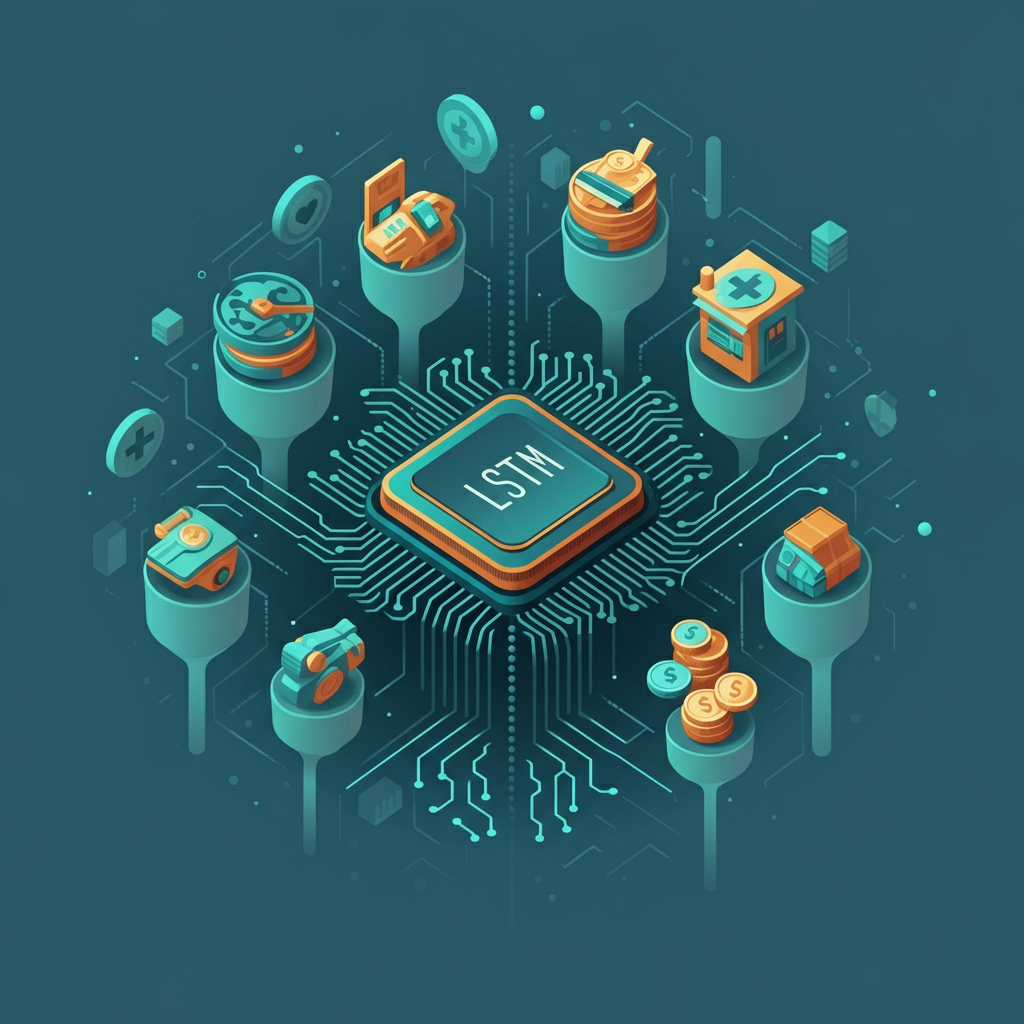Unlocking the potential of sequential data is one of the most fascinating challenges in artificial intelligence. Whether predicting stock prices, translating text, or recognizing speech patterns, capturing dependencies within sequential data stands at the heart of modern AI. Enter Long Short-Term Memory (LSTM), a breakthrough in deep learning designed to overcome the limitations of traditional neural networks.
This in-depth guide explores LSTM from its architecture and algorithm to real-world applications and cutting-edge advancements. By the end, you’ll understand why LSTM remains a game-changer in machine learning and how you can leverage it for your projects.
The Role of LSTM in Deep Learning
Understanding the foundation of deep learning
Deep learning uses artificial neural networks to process data and make decisions like humans do. However, not all neural networks are created equal, especially when working with sequential data like time-series inputs or natural language.
Traditional Recurrent Neural Networks (RNNs) were designed to handle such sequential data since they allow information to persist by looping through connections. However, RNNs faced a major limitation that hindered their effectiveness: the vanishing gradient problem.
Enter LSTM
Long Short-Term Memory networks, introduced by Hochreiter and Schmidhuber in 1997, addressed this critical issue. LSTM is a specialized form of RNN capable of capturing long-term dependencies by cleverly managing the flow of information. It achieves this through its unique architecture that prevents gradients from shrinking exponentially, making it an essential tool for modern AI challenges.
The result? A neural network that excels in understanding and predicting sequences. This is why LSTM is used in technologies such as voice assistants like Siri, predictive text, and even advancements in autonomous vehicles.
Inside the LSTM Architecture

Breaking down the LSTM cell
At the core of an LSTM lies its cell, which consists of three main gates and an internal cell state. Each gate is a neural network layer and serves as a barrier, controlling the flow of information.
- Forget Gate
- Determines what information should be discarded from the cell state.
- Operates using a sigmoid function that outputs a value between 0 (forget) and 1 (retain).
- Input Gate
- Decides which information should be added to the cell state.
- Uses a combination of sigmoid and tanh functions to update the cell.
- Output Gate
- Controls what part of the cell state should be output as the current step’s result.
- Combines data from the current input and cell state using activation functions.
Cell state as the backbone
The cell state acts as the memory of the LSTM, carrying relevant information across sequences while gradually forgetting irrelevant parts. This mechanism is key to LSTM’s ability to retain long-term dependencies.
Mathematical expressions
While the architecture might seem complex at first glance, these mathematical formulas simplify the process behind the gates and cell operations:
- Forget Gate \( ft = \sigma(Wf \cdot [h{t-1}, xt] + bf) \)
- Input Gate \( it = \sigma(Wi \cdot [h{t-1}, xt] + bi) \)
- Cell Update \( \tilde{C}t = \text{tanh}(Wc \cdot [h{t-1}, xt] + bc) \)
- Cell State \( Ct = ft \ast C{t-1} + it \ast \tilde{C}t \)
- Output Gate \( ot = \sigma(Wo \cdot [h{t-1}, xt] + bo) \)
- Hidden State \( ht = ot \ast \text{tanh}(Ct) \)
Simplified visual representation
Here’s an easy-to-follow diagram demonstrating LSTM’s interconnected gates and cell state:
“`
[ Input Data ] –> [ Forget Gate ] –> [ Cell State ] –> [ Output Gate ]
^
|
[ Input Gate ] –> [ Update/Add Information ] ———-
“`
Step-by-Step LSTM Algorithm
Step 1. Initialize the LSTM network
Feed-in the initial input data sequence and initialize the hidden states.
Step 2. Process input through gates
Each gate performs its specific task, adjusting what information flows through the network.
Step 3. Update cell state
The updated cell state retains relevant information while discarding unnecessary data.
Step 4. Generate output
Based on the cell state and output gate, the final step produces the output for the current sequence.
Step 5. Iterate through sequences
The LSTM repeats this process for each step in the sequence. If you’re working with long sequences, this is where the true power of LSTM shines.
Applications of LSTM Across Industries
1. Natural Language Processing (NLP)
- Machine Translation: Services like Google Translate rely on LSTMs to accurately translate between languages.
- Sentiment Analysis: Used in customer reviews to classify emotions as positive, negative, or neutral.
- Text Generation: LSTMs power autocomplete features and creative tools like story generation.
2. Time Series Analysis
- Stock Market Prediction: LSTMs analyze past stock trends to predict future prices.
- Weather Forecasting: Models effectively forecast temperature and precipitation changes.
- Anomaly Detection: Identify unusual patterns in financial fraud or server performance monitoring.
3. Speech and Audio Recognition
- Voice Assistants (e.g., Siri, Alexa): Process continuous voice streams for commands.
- Transcription Services: Convert spoken words into text via advanced speech recognition models.
- Music Composition: Algorithms compose melodies or mimic specific styles like jazz or classical.
4. Beyond Traditional Uses
LSTMs also excel in robotics, video summarization, and even DNA sequence analysis in biotechnology.
Advantages and Limitations of LSTM
Benefits
- Captures long-term dependencies effectively.
- Solves the vanishing gradient problem.
- Highly versatile and applicable across multiple domains.
Challenges
- Computationally expensive due to complex architecture.
- Can be difficult to train with large datasets.
- Vulnerable to overfitting without proper regularization.
Comparison with GRU and Transformers
GRUs (Gated Recurrent Units) offer simpler, faster alternatives to LSTMs, while Transformer networks like GPT have redefined state-of-the-art AI in NLP applications with their attention mechanisms.
Best Practices for Implementing LSTM
- Data Preprocessing
Normalize data and ensure consistent sequence lengths.
- Hyperparameter Tuning
Experiment with layer sizes, batch sizes, and learning rates.
- Regularization
Apply dropout and early stopping to reduce overfitting.
Real-World LSTM Case Studies
- Social Media Sentiment Analysis
Using LSTM to analyze user sentiment around product launches for better marketing strategies.
- Stock Price Prediction
Leveraging LSTM models to provide accurate financial forecasting for investors.
- Language Learning Platforms
Integrating LSTM for real-time translation and adaptive teaching techniques.
Future Trends in LSTM Development
- Incorporation of attention mechanisms for better focus on key data points.
- Hybrid architectures combining LSTM with Transformers or CNNs.
- Optimizations in AI hardware for faster LSTM training and inference times.
Leveraging the Future of Sequential Modelling
LSTM remains a vital tool at the forefront of deep learning and AI innovation. Whether you’re analyzing massive time series datasets or launching the next great NLP startup, an understanding of LSTM will equip you to tackle complex sequential tasks.
Start exploring the endless possibilities of LSTMs today and push the boundaries of what’s achievable with AI in today’s world.


